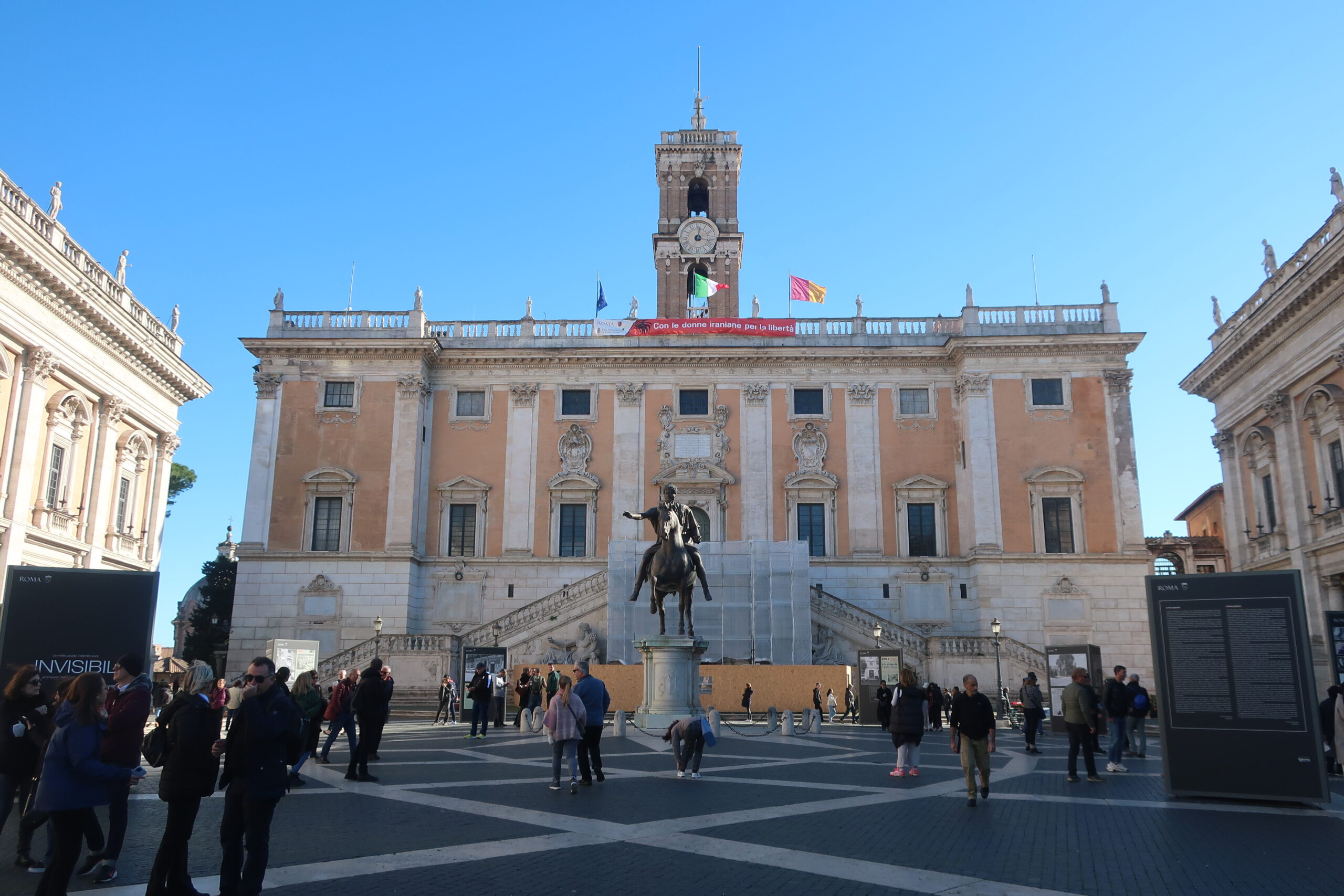(4) Campidoglio designed by Michelangelo - Rome's iconic structure overlooking the Roman Forum
Finally, from this point on, we will see the ancient Roman buildings.
Masumi Ishinabe cites Campidoglio as a suitable first step.
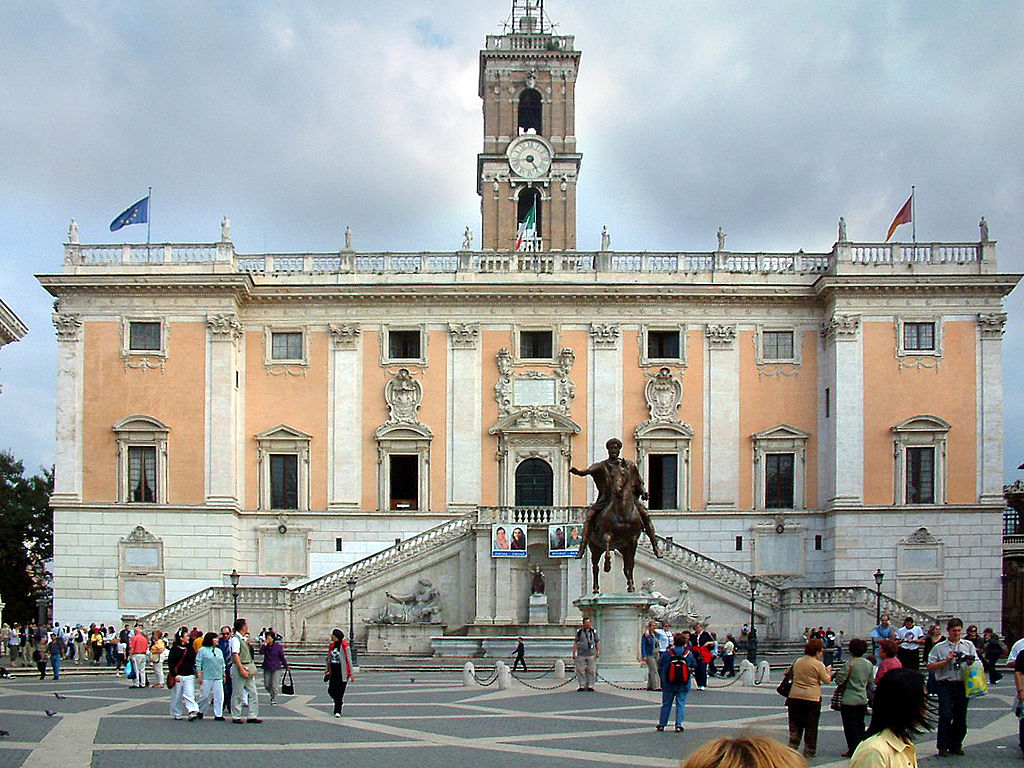
It is a well-known saying that "all roads lead to Rome," but where in Rome does it lead to? The Campidoglio was the zero point of the Roman Empire, a symbol of its power. Therefore, among the many monuments that remain in Rome today, the Colosseum symbolizes ancient Rome, and St. Peter's Basilica symbolizes Christian Rome, but if you ask me where is the "place" that symbolizes "Rome" without such barriers, I would answer without hesitation I would answer, without hesitation, that it is the Campidoglio. In fact, there is no better place than the Campidoglio to meditate on the history of Rome and to understand how the city came to be.
In this sense, I think that a visit to the ruins of ancient Rome should start with standing on the hill of the Campidoglio. But to reach the Campidoglio, one has to cross the flood of cars, sometimes risking one's life. The Piazza Venezia, which was built after the unification of the city, is a major transportation hub in Rome, and the cars never stop coming. However, once you are greeted by the Lion Fountain and start walking up the gently sloping "Cordonata" (stone stairway), you are in another world.
After climbing up Cordonata, one arrives at Piazza del Campidoglio. The building in front is Palazzo Senatorio (City Hall), Palazzo di Conservatori on the right, and Palazzo del Museo Capitolino on the left, and the famous equestrian statue of Emperor Marcus Aurelius is placed in the center of the square. It is a masterpiece of Renaissance architecture and urban development designed by Michelangelo.
Michelangelo's Piazza del Campidoglio is the fulfillment of a Renaissance Roman dream to rebuild the decaying Campidoglio, which took more than 100 years to complete. It took more than 100 years to complete. Although many parts of the building were not designed by Michelangelo, the overall conception and the architecture of Palazzo di Conservatori, which is particularly outstanding, are worth taking the time to appreciate. I consider Michelangelo truly great as an architect and a painter, rather than as a sculptor or a painter. I was struck by the intense originality of Michelangelo's work at the Biblioteca Laurenziana in Florence about five years ago, an experience I will never forget, and Piazza del Campidoglio has never let me down.
Masumi Ishinabe, Yoshikawa KobunkanAs Long as St. Peter's Stands: My Guide to Rome.p68-70
It is a well-known saying that "all roads lead to Rome," but where in Rome does it lead to?'-' (used in place of '-')
It is still interesting to know the background of a word I vaguely knew.
In this sense, Masumi Ishinabe's words are very convincing: "If you want to study ancient Rome, you should start here first.
What is most noteworthy is that the current Campidoglio was designed by Michelangelo. For many people, Michelangelo may be associated with his sculptures and "The Last Judgment.

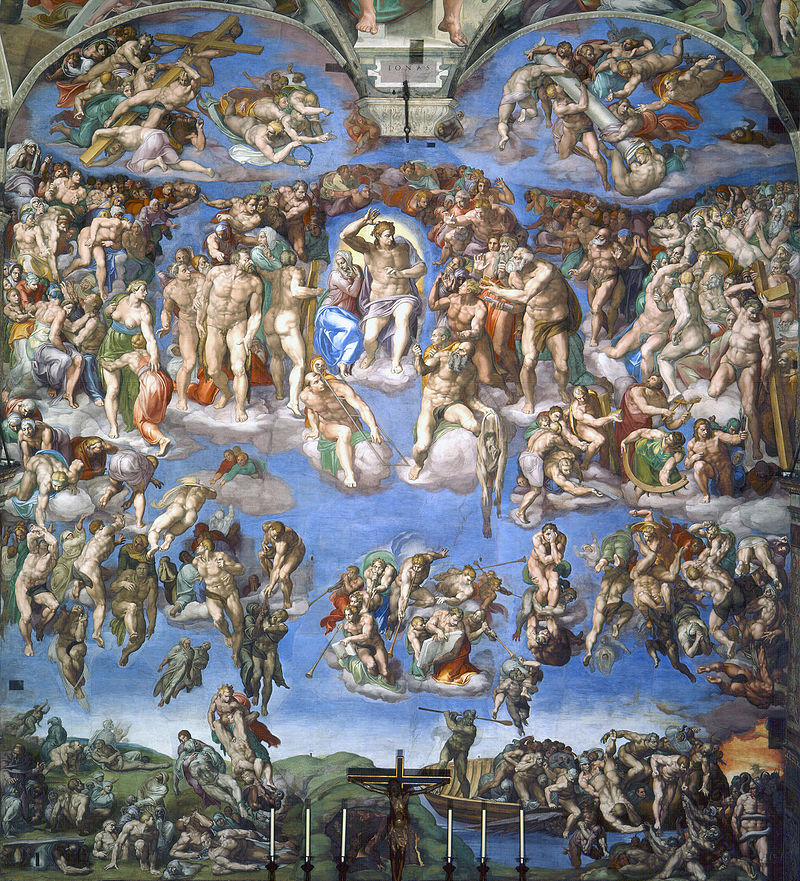
But Michelangelo was also a brilliant architect, designing the dome of St. Peter's Basilica, for example.
Michelangelo's talent as an architect is highly praised by Masumi Ishinabe. The Campidoglio is the place where one can fully appreciate it.
And the campidoglio has an even more important meaning.
By the way, I would like to call your attention to two points. One is the orientation of the square. The first is the orientation of the square: it faces not toward the ancient center, the Roman Forum, but toward the opposite medieval area and St. Peter's Basilica. This will be explained later, but the ancient center and the medieval center haveslippageThis confirms one of the most basic facts in understanding Rome, that there was a "city-state" in Rome. The other is that the fact that the Pope (Paulus III) maintained the Campidoglio, which in ancient times was a sacred place and in the Middle Ages was the seat of the government of the comune (city-state), which was a rival to the papacy, is a sign of the confidence of the papacy, which took full control of the city at the beginning of the 16th century. In this sense, the maintenance of the Campidoglio by the Pope was an epoch-making project that paired with the construction of the new St. Peter's Basilica, which had already begun.
Masumi Ishinabe, Yoshikawa KobunkanAs Long as St. Peter's Stands: My Guide to Rome.p70-71
Originally, the Campidoglio was the central temple of ancient Rome. That is why it was oriented toward the Foro Romano.
But during the Renaissance in the 16th centuryThe direction of St. Peter's Basilica on the opposite sideThe building was reconstructed to face the There is a significant significance here.
The Roman Empire fell in the late 5th century. At the time of the empire's collapse, the Campidoglio, the temple of the Roman Empire, was thoroughly destroyed. Since then, the site has been left to ruin.
However, the collapse of the Roman Empire did not mean that all the influential people who ruled Rome disappeared as well. It was the Roman Catholics who took over this land in place of the empire, and it was also the reality of Rome that there were influential urban aristocrats. And the base of these aristocrats was the city hall (comune) in the Campidoglio. In a sense, this was also the territory of the native Roman aristocracy, which the Catholic Church could not do as it pleased.
The fact that it was reconstructed for the first time in the 16th century is a very significant event. This is a sign of the growing power of Roman Catholicism. Although we tend to think of Rome in terms of the Vatican and Catholicism, it is actually not that simple. The history of this city is more complex than one might imagine.
Let us now look at the actual campidorios.
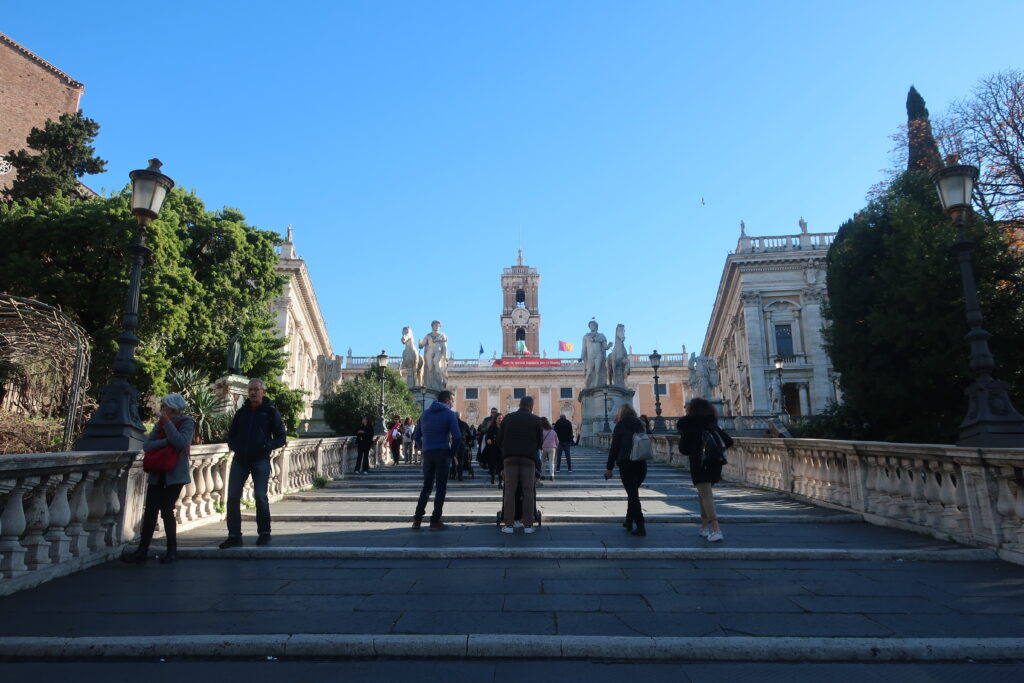
The cobblestone slope in front of the Campidoglio. It is not a stairway, but it is not a mere slope either. It is a strange sensation to walk on it.
With each step, the view gradually opens up, and I feel a sense of elation. Is this also Michelangelo's calculation?
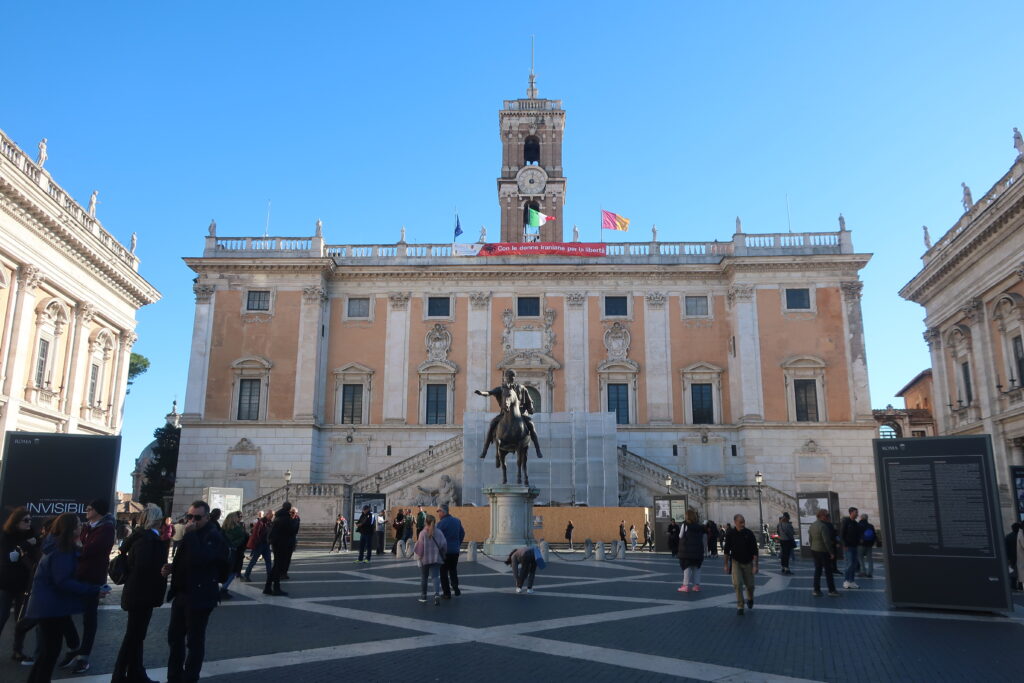
After climbing up the hill, we reached Piazza del Campidoglio. The equestrian statue in front is that of Marcus Aurelius. This is a replica, and the original is on display at the Capitolino Museum here.
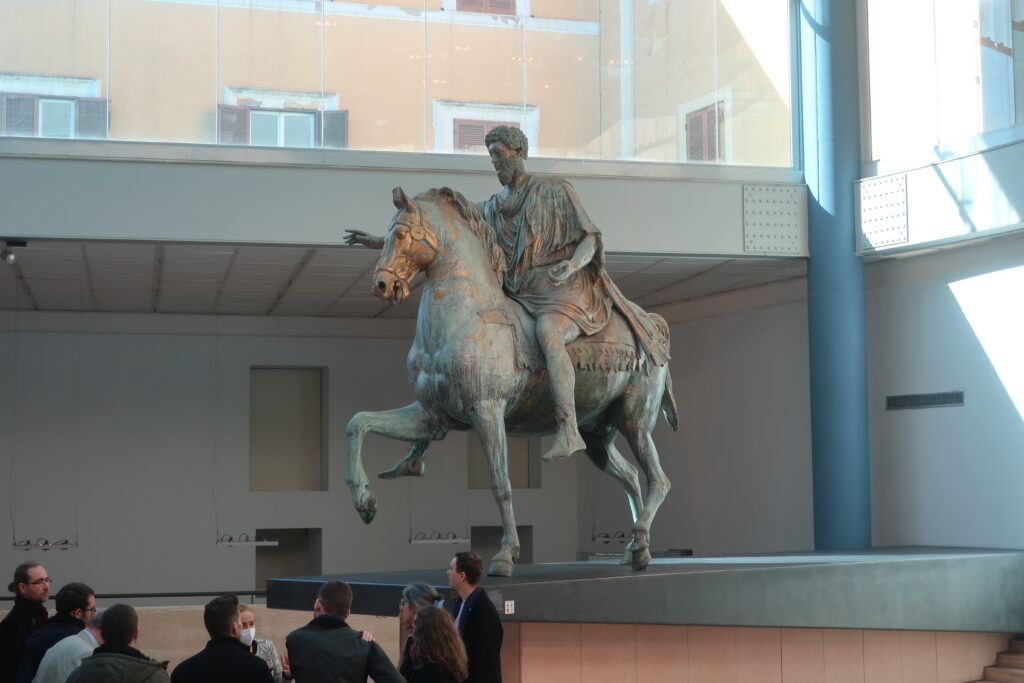
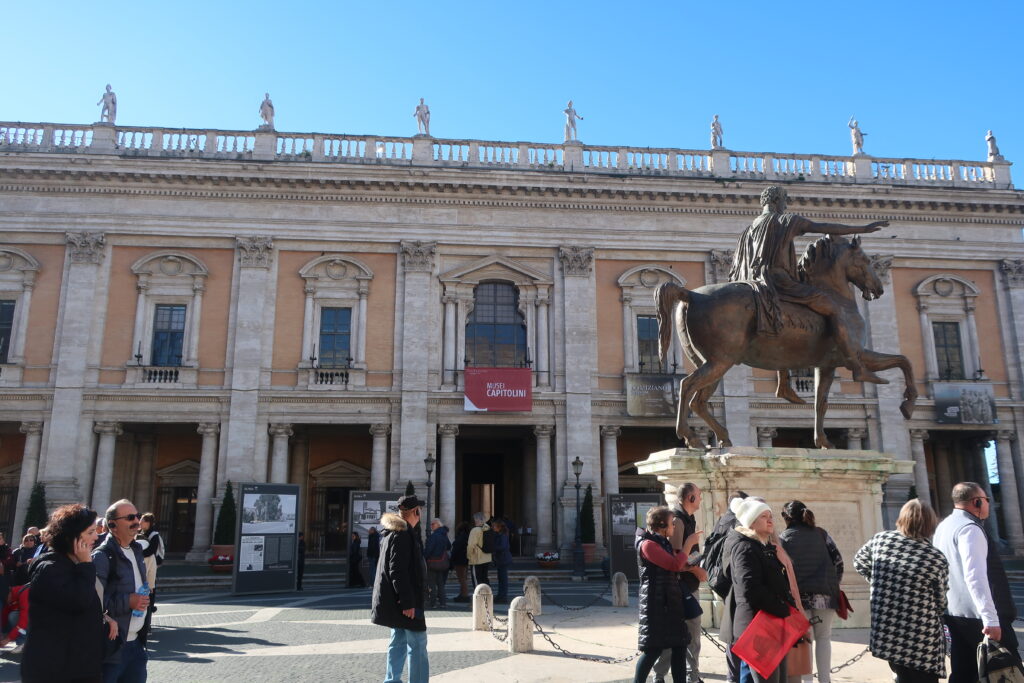
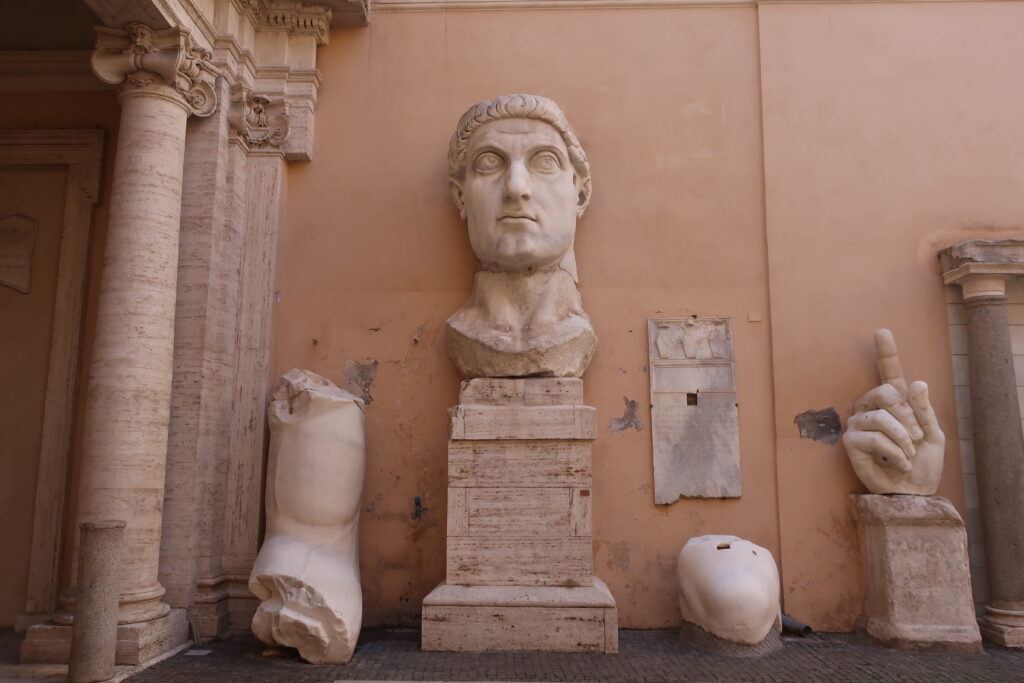
Incidentally, the famous statue of Emperor Constantine is also on display at the Capitolino Museum. The statue of this emperor, who is known to have sanctioned Christianity and moved the capital from Rome to Constantinople (now Istanbul), is one of the highlights of the museum.
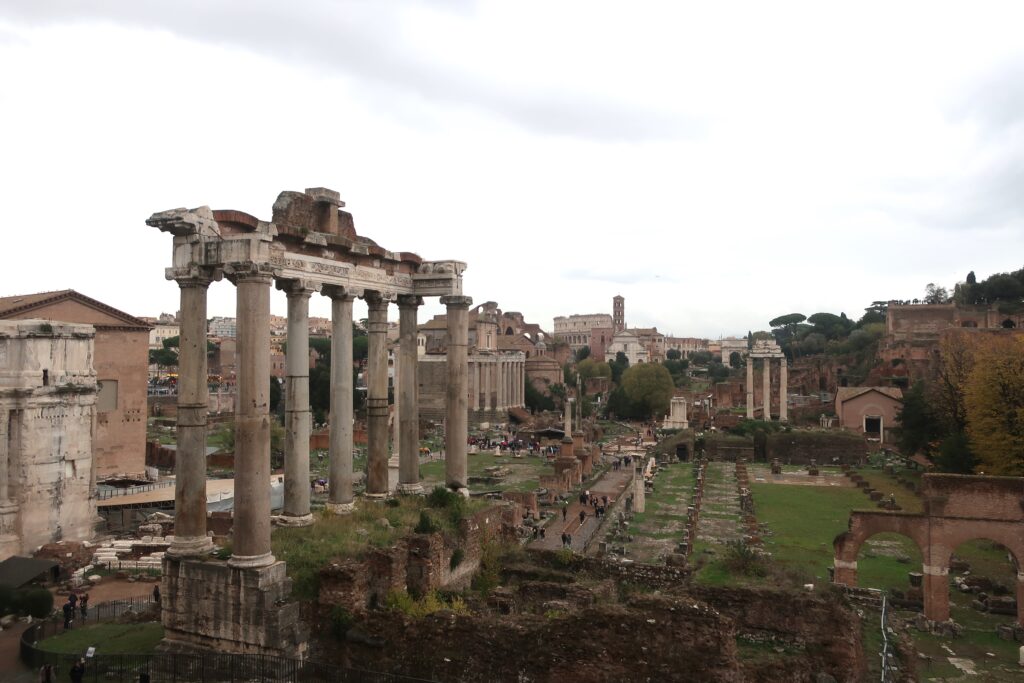
The Campidoglio offers a panoramic view of the Foro Romano. It is a wonderful spot to look down from above and experience the Foro Romano in detail. Masumi IshinabeA visit to the ruins of ancient Rome should begin with a stand on this hill of the Campidoglio.I could well understand why he stated, "I'm not sure I'm going to be able to do this. Standing here, I felt a sense of anticipation. I had already made a reservation to enter the Roman Forum a few days later, and I was filled with excitement that I was about to enter the world of ancient Rome.
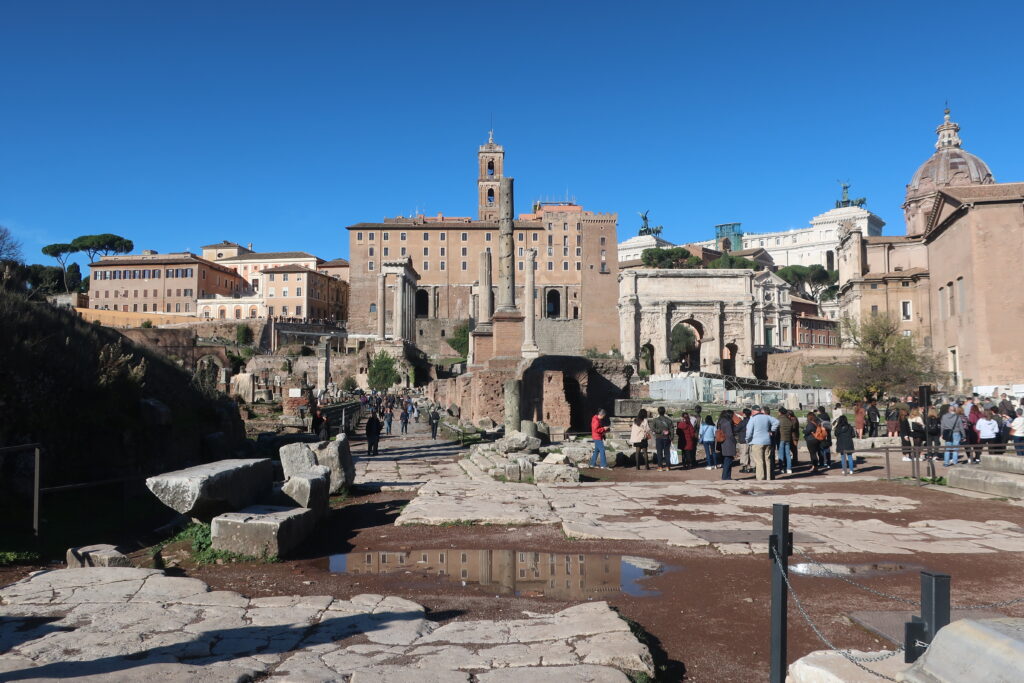
This is the Campidoglio taken later from the Foro Romano (by the way, the above photo of the blue sky in Piazza del Campidoglio was also taken at that time). In ancient Roman times, the Campidoglio stood facing us. Now its back is facing us. By the way, the point where you can see a panoramic view of Foro Romano above is in the upper left corner of this photo. You can see some people there. I was also looking at the Foro Romano from there.
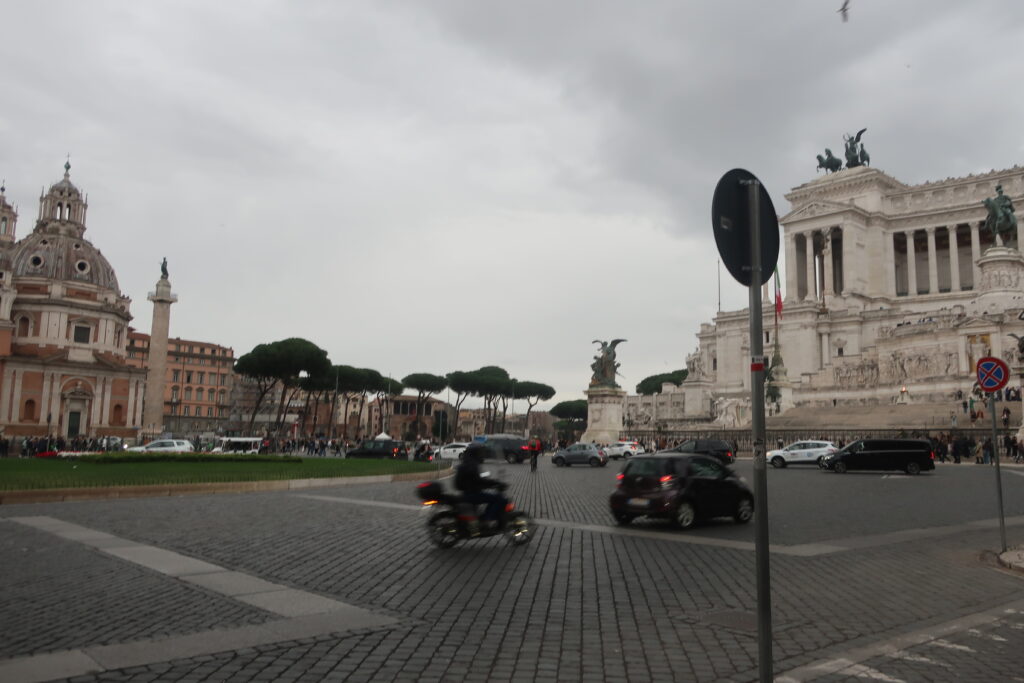
Finally, the neighborhood where Masumi Ishinabe said, "To reach the Campidoglio, you have to cross the flood of cars, sometimes risking your life.
Indeed, there are many bus stops here, and passenger cars are constantly running. Moreover, although there is a pedestrian crossing, there is no traffic signal. So you have no choice but to quickly cross the street in between the cars that are constantly coming. If you are not used to it, it can be intimidating.
However, in a sense, it is enjoyable to clear each of these obstacles on the way to the destination, as it gives one a sense of accomplishment. The spectacular views of the Campidoglio and Foro Romano that we arrive at give us an indescribable feeling of accomplishment. This is something I can't stop doing. It is not long before I am fully immersed in the charms of Rome. I too have been charmed by the charm of Rome on my first day.
In the next article, I would like to talk about the Colosseum, which I visited at a later date.
be unbroken
*The list of articles in the "Rome Travel Journal" can be found atCategory page hereindicates direction or goal (e.g. "to")
*Please visit this category page for recommended books to learn about Rome and Italy.
The Rise and Fall of the Roman Empire, the Vatican, and Roman Catholicism."
The Italian Renaissance and the Revolution in Knowledge."
Next Article.
Click here to read the previous article.
Related Articles











